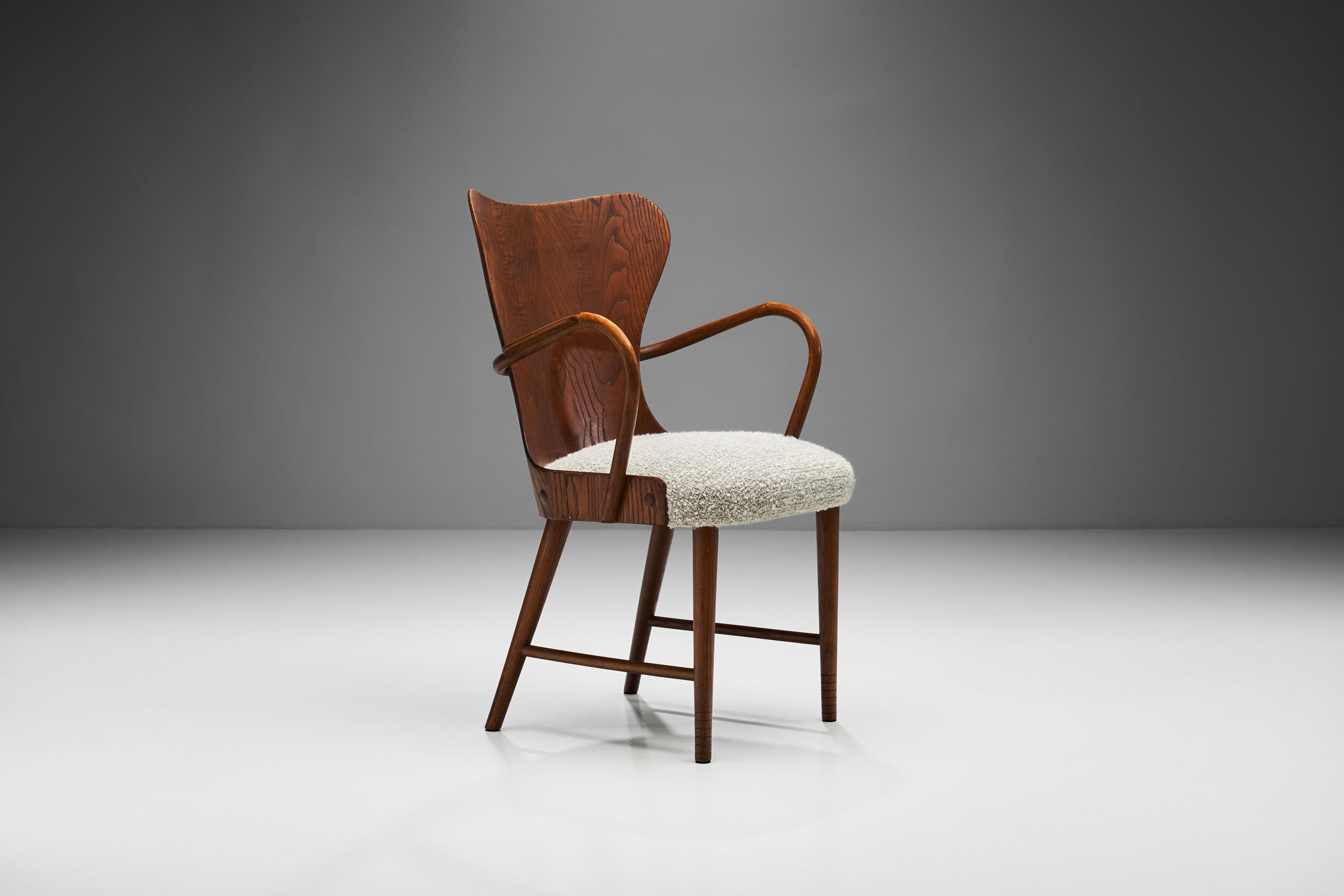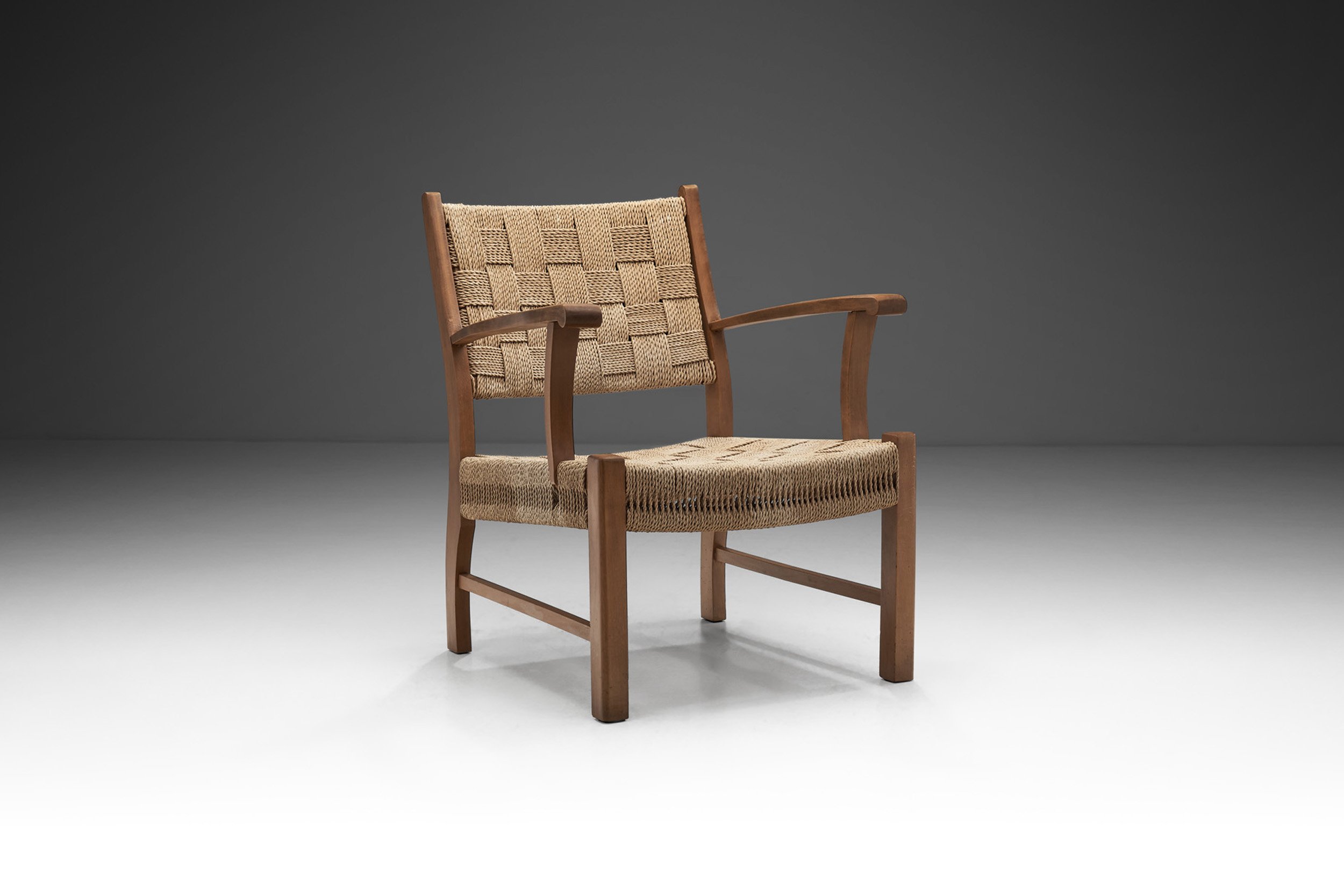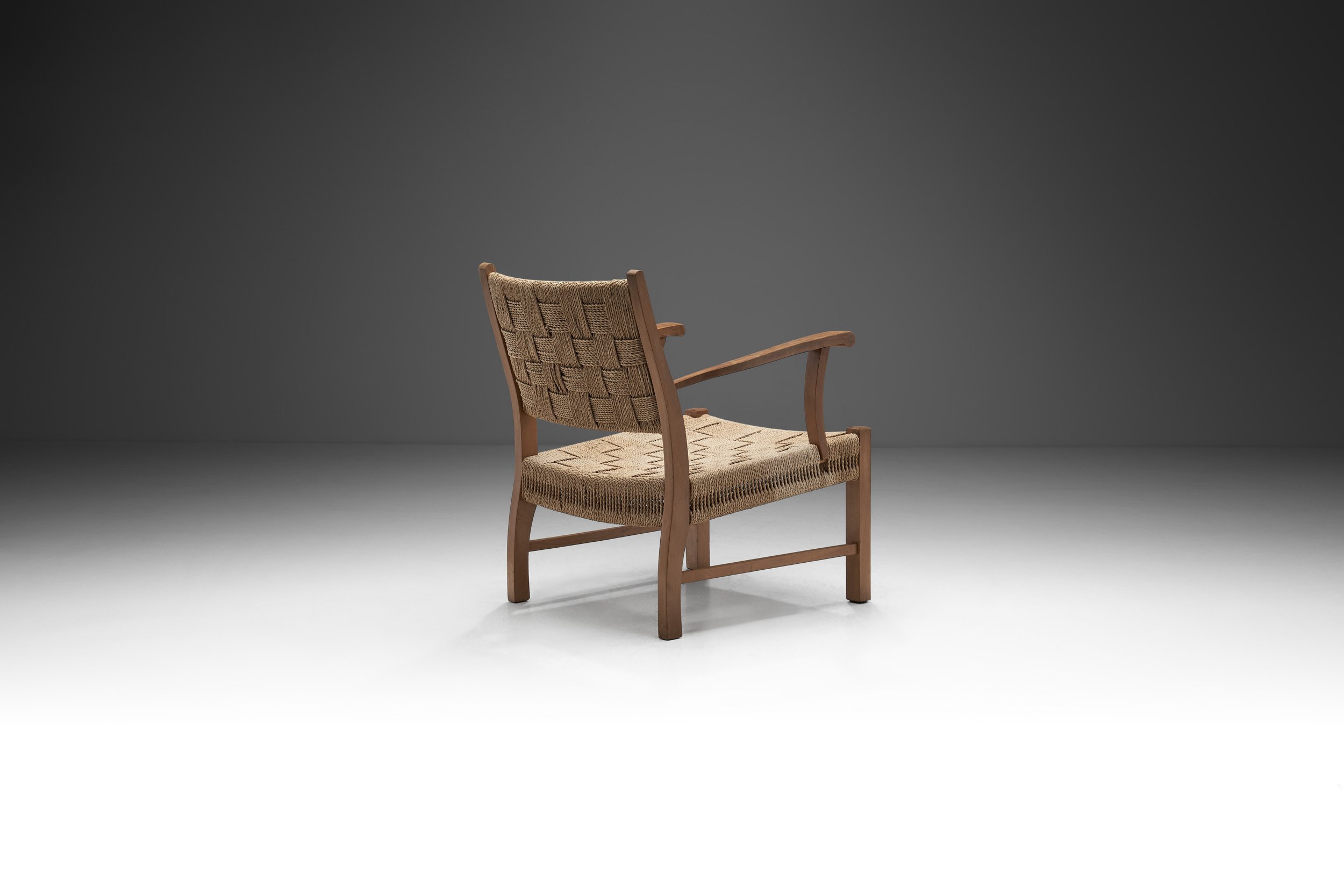Set of Five Armchairs by Søren Hansen for Fritz Hansen, Denmark 1943 (sold)


























Set of Five Armchairs by Søren Hansen for Fritz Hansen, Denmark 1943 (sold)
The chairs of this Søren Hansen set are the Danish designer’s most well-known models. This model also represents the success of Fritz Hansen’s experiments with new materials and new manufacturing methods.
These stained oak chairs stand out for their back- and armrests that are steam-bent. The boldly-shaped backrest is cut from plywood with a layer of oak veneer. It is bent into a curve around the bentwood frame of the seat and then fixed in place with screws. While the plywood might appear fragile, the design is surprisingly strong. The armrests are made from a single piece of bent wood that loops around the back to provide firm support. Visually similar chairs do exist, but the backs of these chairs are curved in just one plane, which distinguishes them from other designs.
The seats have been recently reupholstered in a premium light bouclé fabric, creating a beautiful contrast with the oaken legs and frame.
SOLD
Condition:
Wear due to age and use. One chair with newer mounting under the seat. One chair with newer wood piece in the back. Reupholstered in a premium fabric. Each of our items can be re-upholstered by our in-house atelier in a fabric of choice. Please reach out for more information.
Dimensions:
21.5 in W x 21.41 in D x 33.46 in H; Seat height 18.30 in
55 cm W x 54.4 cm D x 85 cm H; Seat height 46.5 cm
Literature:
Arne Karlsen: “Dansk Møbelkunst i det 20. århundrede”, vol. 1, pp. 184–186.
Danske Stole / “Danish Chairs”, Høst og Søns Forlag København, p. 81.
About the designer:
Søren Hansen (1905-1977) was the grandson of Fritz Hansen himself, the founder of the furniture company Fritz Hansen. Along with his brother, Søren Hansen took control of the company in the 1950s. The designer had a great interest in plywood and developing methods to steam bend.
The year of the design (1943) of this model also explains, in part, the reasons for the experiments with plywood and bentwood for making chairs. Through the Second World War, good high-quality timber for making furniture was scarce and the situation meant that most people were spending much less, or no money on new furniture. However, the war also brought rapid improvements in cutting and shaping plywood as it was used for building lightweight planes and boats with thin sheets of laminated wood pinned over a wood frame.
In the designs of Søren Hansen, rather than using traditional mortice-and-tenon joints - normal in the work of a cabinetmaker - the separate parts of his chairs are fixed together with screws and bolts so, like the Thonet chair, it seems to mark an intermediate stage between cabinet making and the later industrial production or factory production of furniture that did not require workbench woodworking skills. ~H.






















